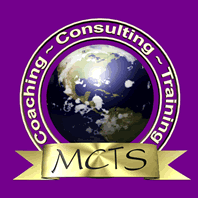 |
ROUGH CUT CAPACITY PLANNING (Sample
of Full-Text)
Summary
In this section, three approaches to rough cut capacity planning are examined. The least detailed, the capacity planning using overall factors (CPOF) approach, is quickly computed but is insensitive to shifts in product mix. A second approach, bill of labor, involves multiplying two matrices, the bill of labor and the master production schedule. This approach picks up shifts in product mix, but does not consider lead-time offsets. The third approach, resource profile, takes lead-time offsets into account. Both the bill of labor approach and the resource profile approach implicitly assume a lot-for-lot policy for setting lot sizes. If some other technique, such as economic order quantity or the Silver-Meal algorithm is used, then either approach is a very rough estimate. For that reason, the bill of labor approach is recommended because it is easily implemented on a microcomputer and is just as accurate as the more cumbersome resource profile approach. In any event, rough-cut capacity plans should be used only to determine if sufficient capacity exists over broad time frames such as a month or a quarter.
Drum-buffer-rope is an emerging procedure (discussed below) that eliminates the need for iteration found in all three RCCP approaches. It is presently used by a small but growing number of corporations.
In this section, we examine the process of RCCP. First, we examine the role of RCCP in the overall production planning and control system. Then we look at three RCCP techniques and discuss the selection of a technique. Third, we examine the various decisions that are based on RCCP. Finally, we look at two alternative approaches to capacity management, line balancing under the Just-in-Time philosophy, and the drum-buffer-rope technique of the theory of constraints philosophy.
What is RCCP?
Capacity planning and control techniques were introduced briefly in previous sections. Material requirements planning (MRP) uses a master production schedule (MPS) of end items to determine the quantity and timing of component part production. MRP is capacity insensitive; it implicitly assumes that sufficient capacity is available to produce components at the time they're needed.
A problem commonly encountered in operating MRP systems is the existence of an overstated MPS. An overstated master production schedule is one that orders more production to be released than production can complete. An overstated MPS causes raw materials and WIP inventories to increase because more materials are purchased and released to the shop than are completed and shipped. It also causes a buildup of queues on the shop floor. Since jobs have to wait to be processed, actual lead times increase, causing ship dates to be missed. As lead times increase, forecast accuracy over the lead-time diminishes because forecasts are more accurate for shorter periods than for longer ones. Thus, overstated master production schedules lead to missed due dates and other problems. Validating the MPS with respect to capacity is an extremely important step in MRP. This validation exercise has been termed rough cut capacity planning (RCCP).
There is no general agreement on the level of detail that should be incorporated in the MPS validation. An APICS monograph (Berry, Voliman, and Whybark 1979) presents case histories of several companies, including details on the capacity planning process. Some companies used very crude techniques, other used detailed, time-phased, methods.
THE ROLE OF RCCP IN THE PRODUCTION PLANNING AND CONTROL SYSTEM
Figure 1 shows an overview of the entire production planning and control (PPC) process under MRP. Capacity management techniques usually are separated into four categories: resource requirements planning (RRP), rough cut capacity planning (RCCP), capacity requirements planning (CRP), and input/ output control. These represent the four time horizons considered. In an MRP system the typical sequence is to create a master schedule, use rough cut capacity planning to verify that the MPS is feasible, perform the MRP explosion, and send planned order release data to capacity requirements planning. Plossl and Welch (1979) describe the role RCCP plays in the overall PPC system:
